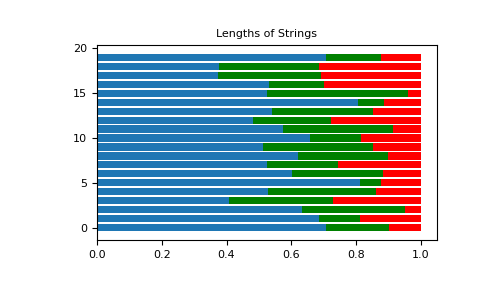numpy.random.Generator.dirichlet¶
method
- random.Generator.dirichlet(alpha, size=None)¶
Draw samples from the Dirichlet distribution.
Draw
sizesamples of dimension k from a Dirichlet distribution. A Dirichlet-distributed random variable can be seen as a multivariate generalization of a Beta distribution. The Dirichlet distribution is a conjugate prior of a multinomial distribution in Bayesian inference.- Parameters
- alphasequence of floats, length k
Parameter of the distribution (length
kfor sample of lengthk).- sizeint or tuple of ints, optional
Output shape. If the given shape is, e.g.,
(m, n), thenm * n * ksamples are drawn. Default is None, in which case a vector of lengthkis returned.
- Returns
- samplesndarray,
The drawn samples, of shape
(size, k).
- Raises
- ValueError
If any value in
alphais less than or equal to zero
Notes
The Dirichlet distribution is a distribution over vectors \(x\) that fulfil the conditions \(x_i>0\) and \(\sum_{i=1}^k x_i = 1\).
The probability density function \(p\) of a Dirichlet-distributed random vector \(X\) is proportional to
\[p(x) \propto \prod_{i=1}^{k}{x^{\alpha_i-1}_i},\]where \(\alpha\) is a vector containing the positive concentration parameters.
The method uses the following property for computation: let \(Y\) be a random vector which has components that follow a standard gamma distribution, then \(X = \frac{1}{\sum_{i=1}^k{Y_i}} Y\) is Dirichlet-distributed
References
- 1
David McKay, “Information Theory, Inference and Learning Algorithms,” chapter 23, http://www.inference.org.uk/mackay/itila/
- 2
Wikipedia, “Dirichlet distribution”, https://en.wikipedia.org/wiki/Dirichlet_distribution
Examples
Taking an example cited in Wikipedia, this distribution can be used if one wanted to cut strings (each of initial length 1.0) into K pieces with different lengths, where each piece had, on average, a designated average length, but allowing some variation in the relative sizes of the pieces.
>>> s = np.random.default_rng().dirichlet((10, 5, 3), 20).transpose()
>>> import matplotlib.pyplot as plt >>> plt.barh(range(20), s[0]) >>> plt.barh(range(20), s[1], left=s[0], color='g') >>> plt.barh(range(20), s[2], left=s[0]+s[1], color='r') >>> plt.title("Lengths of Strings")
